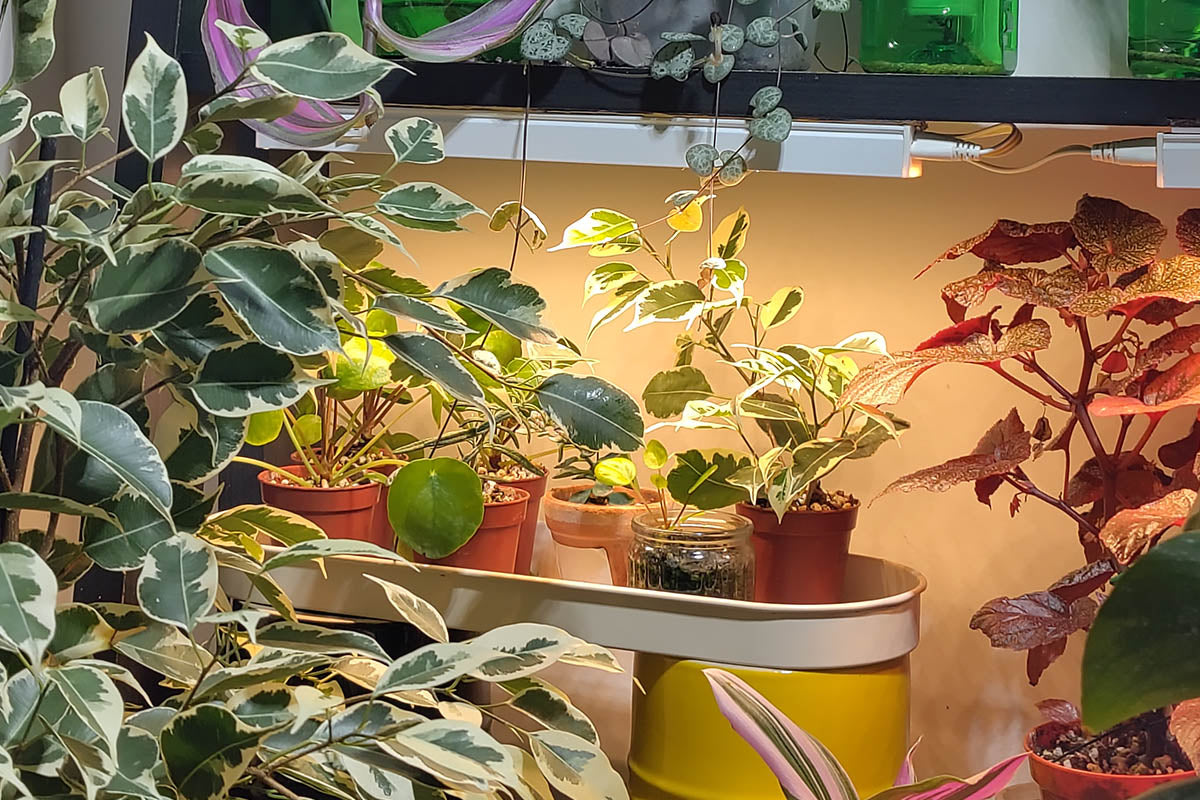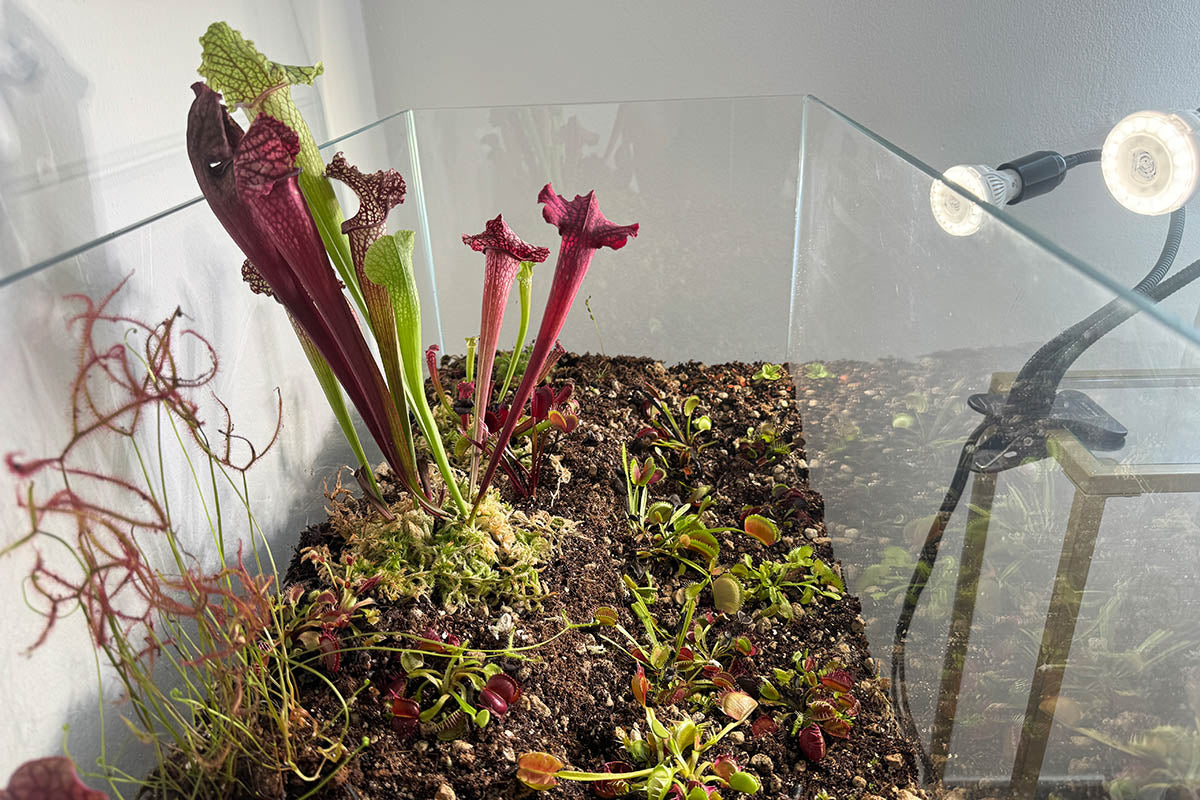Creator's name:Ana
Creator's Instagram:@Anaturalplants
Intro
I've always felt a deep connection to nature, from a very young age. As a kid, I'd play around my mom's garden, speaking to her plants and hugging them as much as I would with my dog. To me, they've always been more companions than decorations anyway.
Growing up, I started to look after them more and more until the point I could move out and have my own collection. Each plant I keep has its own rhythm and character, and through caring for them I’ve learned more about cycles, resilience, and growth than I could have imagined. I also learned a lot about myself through seeing seedlings push their way out of the soil or by rescuing neglected plants and helping them thrive.
When they become their best versions, so do I. And the cycle repeats.
For me, plants transform a home into something more than a building. They soften the edges of rooms, bring freshness into the air, and make spaces feel alive. During stressful times, I find tending to them to be grounding: pruning a trailing vine, wiping dust off leaves, or simply watching how they respond to light is a form of meditation. Over time, I’ve realized that plants also create continuity. Some of mine have been with me through house moves, job changes, and different life chapters. Their steady growth is a kind of anchor.
Because of all this, I want them to thrive as best they can. That means giving them not only water and soil, but the one ingredient that can’t be replaced: light. And here are some of the challenges I've had, as a north-facing window apartment owner with so many buildings shadowing my green friends.

What Issues Arise from a North-Facing Window
North-facing windows are known for receiving the lowest amount of light, especially in the Northern Hemisphere. They tend to receive only indirect light, and often it’s weak and cool in tone. While this might be a blessing in summer, when direct sun can scorch tender leaves, it becomes a serious limitation for anyone who wants to grow your tropical favourites or collectors
items such as monsteras, pothos, peace lilies, philodendrons, alocasias, spider plants and any variegated plant.
In my own home, the north-facing window feels like a compromise. On the one hand, I do get some natural daylight; on the other, it’s not enough to support the lush growth that brings me so much joy. Plants that prefer bright indirect light—like some of the above examples—can get by but often look leggy or sparse. Sun-loving plants like succulents, flowering species, my albos or begonias simply won’t flourish without additional help.
Another issue is seasonality. In winter, days are shorter, and the little natural light that comes through the window is reduced even more. I’ve noticed plants stretching toward the glass, leaves becoming pale (when they don't fall), and growth slowing to almost nothing. It’s a little disheartening when you want to nurture them but can’t control the direction of your home lol!
That’s why artificial lighting became a necessity for me. It bridges the gap between what my environment offers and what my collection desperately needs.

How Sansi Helps in Both Ways
When I first grew my collection considerably, I heard about Sansi plant lights, particularly the 30W bulbs. I wasn’t sure what to expect as they looked different from the blurple grow lights I had used before: instead of harsh purples and blues, Sansi bulbs emit a full-spectrum white light that feels natural in the room. This was the first thing I loved about them. Not only do the plants
benefit, but I do too. My space feels brighter, more like a sunny day, and it integrates seamlessly into daily life without the "grow room" look.
In practical terms, the Sansi light has been a game changer. It delivers a strong output (equivalent to natural daylight levels), which means I can position it over even demanding plants like succulents, cacti, or flowering species. I really only need one for my plant shelf and it provides enough light for 64 plants (phew!).
Under the 30W bulb, I’ve watched formerly struggling plants perk up: succulents hold their compact rosettes instead of stretching, pothos vines grow bushier, and even herbs like basil and parsley maintain a healthy green color. My monsteras literally turned their leaves to face the bulb and both my albo and spider plant went insane after installing it.
Another benefit is the even coverage. The Sansi design avoids the "spotlight" effect, where only the center of a plant gets adequate light. Leaves on the sides receive good exposure too, which makes growth more uniform. This matters when you want your plant to look full rather than lopsided. I think their bulbs have a 120 degree light angle that is *chef's kiss* for plant coverage.
From a user perspective, Sansi lights are also easy to set up. I’ve used them in simple hanging lamps, held on the ceiling by ceiling hooks, right over my plant shelf and they don’t require any complicated fixtures. Because they’re LED, they run cool to the touch, so I don’t worry about heat damage or wasting electricity. And unlike fluorescent tubes, they don’t flicker or buzz.
The also added advantage is that I don't need to turn the living room light on once they're on. As I said: oh boi they are bright.
In short, Sansi lights address both the emotional side of plant care and the technical side. They give me the satisfaction of knowing my plants are thriving, and they make the space more enjoyable for me too.

Other Grow Lights I’ve Used
Before Sansi, I experimented with a few other types of grow lights, each with their own strengths and drawbacks.
Blurple Lights
My first experience was with the typical blurple LED panels that many beginners try. They were affordable and effective in terms of stimulating growth, especially for seedlings. Plants really did respond, putting out new leaves and staying relatively compact. However, the downside was
living with that kind of light in a shared space. The intense purple glow made my living room feel like an alien lab. It wasn’t relaxing or attractive, and it distorted the way everything looked. Over time, I found myself switching them off more often than I should have, which defeated the purpose.
Another issue was photos. Whenever I wanted to share progress with friends or document growth, blurple lighting ruined the pictures. Colors looked off, and leaves appeared unnatural. While they worked technically, they weren’t sustainable for me in the long run.

Barrina T5 Lights
Later, I moved on to Barrina T5 grow lights. These were fluorescent-style LED bars, which offered a better balance between functionality and appearance. They were slim, easy to mount on shelves, and provided a bright light that plants responded well to. I liked that they could cover a wide surface, making them practical for growing multiple plants together.
However, they still had a slight color cast that wasn’t as natural as I wanted. The light leaned toward a cooler, almost sterile tone, which didn’t create the warm, daylight feel I was craving. They also required a bit more installation effort—mounting brackets, connecting cords—which made them less flexible than a simple bulb I could move around.
In comparison, the Sansi 30W has given me the best of both worlds: powerful plant growth support and a natural, pleasant light quality. It fits into a regular socket, doesn’t dominate the atmosphere of a room, and still delivers the performance I’d expect from a grow light.
Conclusion
Caring for plants is as much about the relationship I build with them as it is about the technicalities of soil and light. My north-facing window posed real challenges, but instead of giving up on certain plants, I looked for solutions. The Sansi 30W grow light has become that solution—bridging the gap between the natural limitations of my space and the needs of my plants.



